These Backyard Rinks Up The Game
For Family and Friends
Story by Ron Stang
As winter comes on, thoughts turn to the good old hockey game—on TV, at the local arena and, for some, in their very own backyard.
Sure, families have had backyard rinks from time immemorial. But locally, some have upped the game. These rinks are spacious and built with professional materials, engineered with both novice and professional TLC. They range from several hundred dollars to literally tens of thousands, all to provide a quality ice rink with a sense of professionalism.
And their builders for the most part learned to make the rinks themselves.
Ryan Eagen, owner of Ezee Wheelz, began building his 50 by 80 ft. rink almost a decade ago because his kids—two boys and two girls—were getting into travel hockey. “And I wanted to give them something to do in the wintertime when they’re not on the ice and with their friends.”
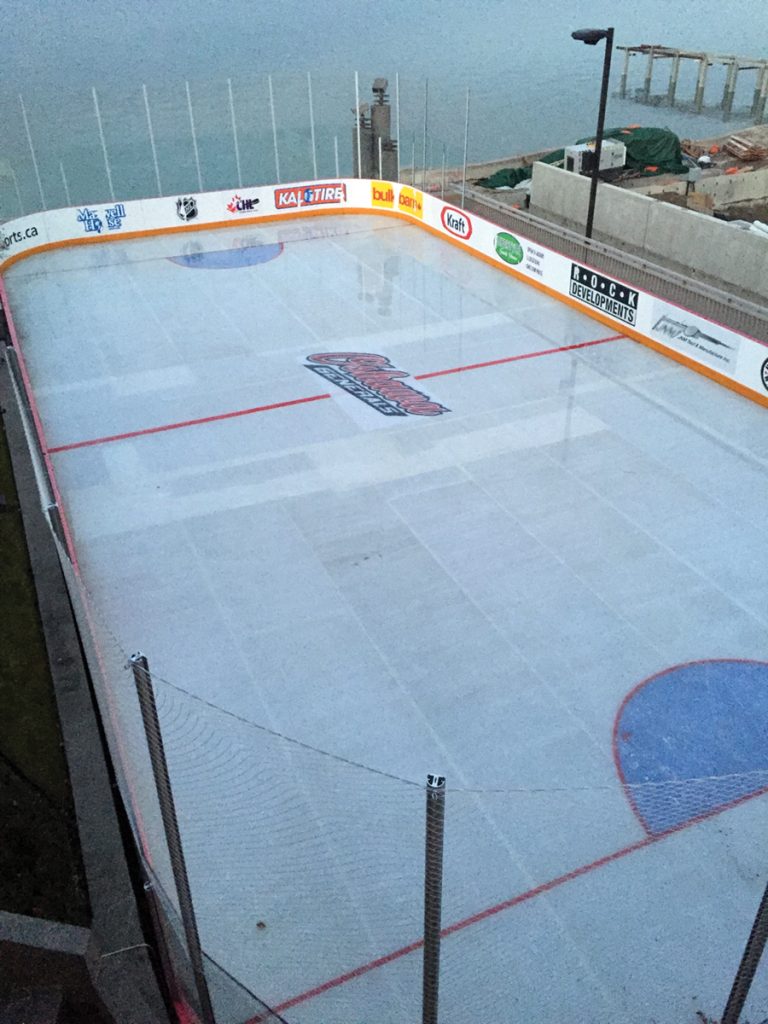
Jeff Casey, owner and publisher of Neighbur, built his 30 by 50 ft. rink for families and friends. During Covid lockdowns it was a godsend. Households couldn’t have people inside, but he would invite them over to use the outdoor rink. “There was no other place to do that in a controlled environment,” he says. “It was pretty awesome.”
Ryan Marier, founder and managing partner of Landmark Financial Planning and Advisory, built his 35 by 70 ft. rink last season. “It just sort of organically came about as my kids became more and more involved in hockey,” he says. And then Covid hit. With regular rinks closed his backyard became a substitute. “Covid was really the catalyst.”
Rocco Tullio, owner of Rock Developments Inc. and owner and president of the Oshawa Generals OHL team, has had his professionally designed Lakeshore 45 by 95 ft. rink a dozen years, used largely by family and especially by son Ty, a forward recently signed to a three-year entry-level contract with the Edmonton Oilers.
As Ty was growing up he would find it difficult to find ice time to practice at commercial rinks. Presto! Rocco solved that problem and gave him and the rest of the family a rink they could call their own, lauding “the convenience of being about to go out in the backyard rink.”
Most of these supersized rinks were built by people who experimented with their own materials or from kits.
Eagen started small. But “as the time went on, I just got carried away, it’s kind of my personality and made it bigger and bigger” alongside his Lakeshore home.
Eagen, with grass as a base, measured out a rectangle and used 2 x 10s for the border. The underlying feature is the plastic liner. “It’s like a big, long tub,” he says. He purchased a 50 ft. wide sheet for $500-$600. “Lay it out as long as you want” and place the square box on top. The plastic is wrapped on the outside. The finishing is exterior plywood boards 10 in. wide and 8 ft. long held by stakes.
Jeff Casey has had his South Windsor rink seven seasons. He built it using a kit from Nice Rink. It comes with 4 ft. by 18 in. interlocking boards—40 altogether—and brackets, and he uses cinderblocks to brace the whole rink. Casey says the liner is key. He tried material from greenhouse supply stores, but these were too thin. “So, I went back to the Nice Rink stuff because it’s a little bit (8 mm) thicker.”
Marier’s rink is built over an asphalt sport court where kids play roller hockey. He learned how to build the rink himself but “the internet helps” including a Facebook group of backyard enthusiasts. He bought high density polyethylene “puck board”—what hockey boards are made of—in 4 by 8 ft. sheets. He already had a commercial grade chain link fence to stop high shots. “So, I thought it would be perfect, it’s strong enough to hold the boards,” he said.
Marier made the curved rink corners out of some leftover wood.
Tullio had his rink professionally designed and engineered at a cost of $200,000. This, folks, is a smaller version of a real arena rink, complete with professional boards, plexiglass, and netting. “It’s basically everything you see at the Atlas Tube arena or Central Park Athletics ice rinks,” he says.
The rink also comes with realistic touches like the Generals logo at centre ice and logos on the boards.
One of the problems with outdoor rinks is Windsor’s short cold weather season.
“Typically, your best ice is January-February,” Eagen says. “You’re really going to get two months out of it, and you hope it stays frozen.”
Keeping the ice perfect is key. That means that after a day’s skating he’s out shoveling and reflooding. “So, then you’re out there for an hour and a half with a hose coming from the barn—I have 3 hoses that I screw together it’s over 300 ft long.”
Says Casey, “You start watching the weather like a hawk. As soon as I see that there are going to be 2 or 3 days that are between say minus 5 and minus 12 then I’ll fill a couple of days before.”
He says last year was probably the best in eight tears for sustained cold temperatures.
Marier says keeping the ice clean and smooth is a “labour of love.” He discovered the so-called Homeboni or Handboni, a make-shift Zamboni that can personally be pulled around the ice.
As part of Tullio’s professionally built rink there is also a mechanical Zamboni, a Kubota tractor pulling an Olympia blade attachment. And underlying his “mini stadium” are chillers which chill the base concrete.
Any rink bells and whistles? These guys have a few.
Eagen says a rink can be the centre of a day or evening’s family entertainment. “I live out in the county so it’s kind of really fun,” he says. They build bonfires and make hot chocolate. Backstops and side posts hold lights. “These kids are playing hockey from 5.30 until they’ve got to go to bed.”
Casey installed some color. “This year I went a little bit more sideways and put lines underneath the liner, so they shine through the ice. And then I put up those patio lights.” He also built an ice path “so the kids could actually skate to the rink.”
Marier put in lines underneath the ice. “Those are just tape. I just put red tape down on the liner, I didn’t know if it would cause a problem with the sun. The sun is our enemy in the backyard rink world.”
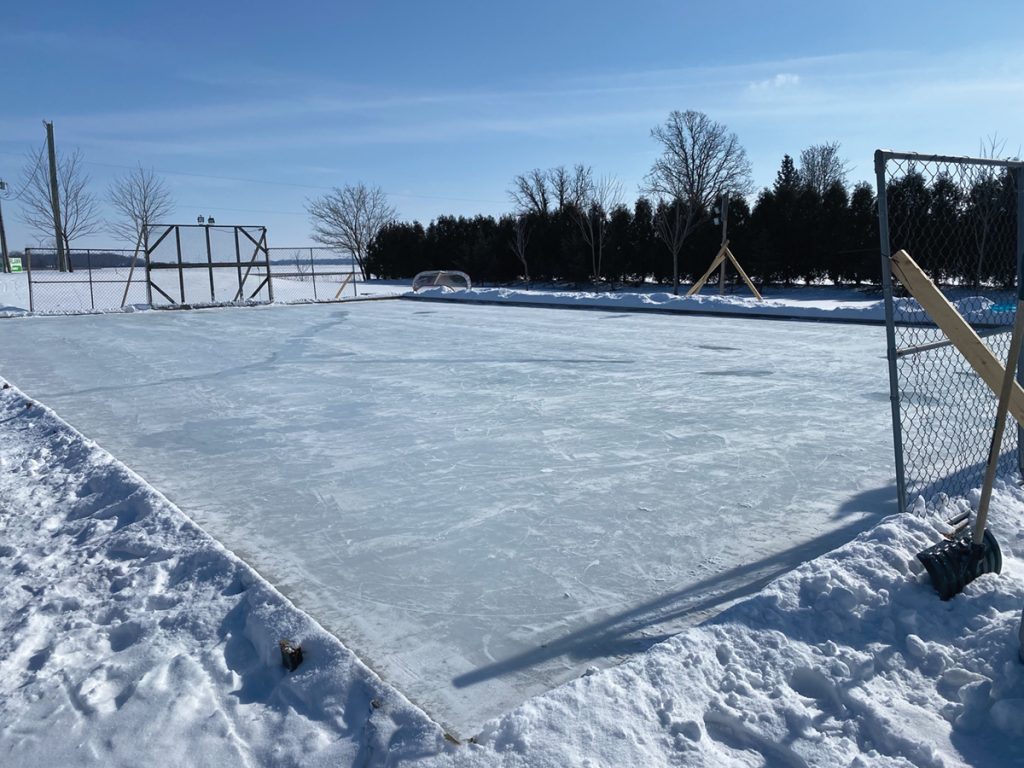
Tullio’s rink has lights and piped in music. He doesn’t know if his rink is the most technologically advanced locally.
“I don’t know of anybody with this size rink in this area,” he says. “But as you start trekking towards Toronto there are ones very similar and larger in nature.”


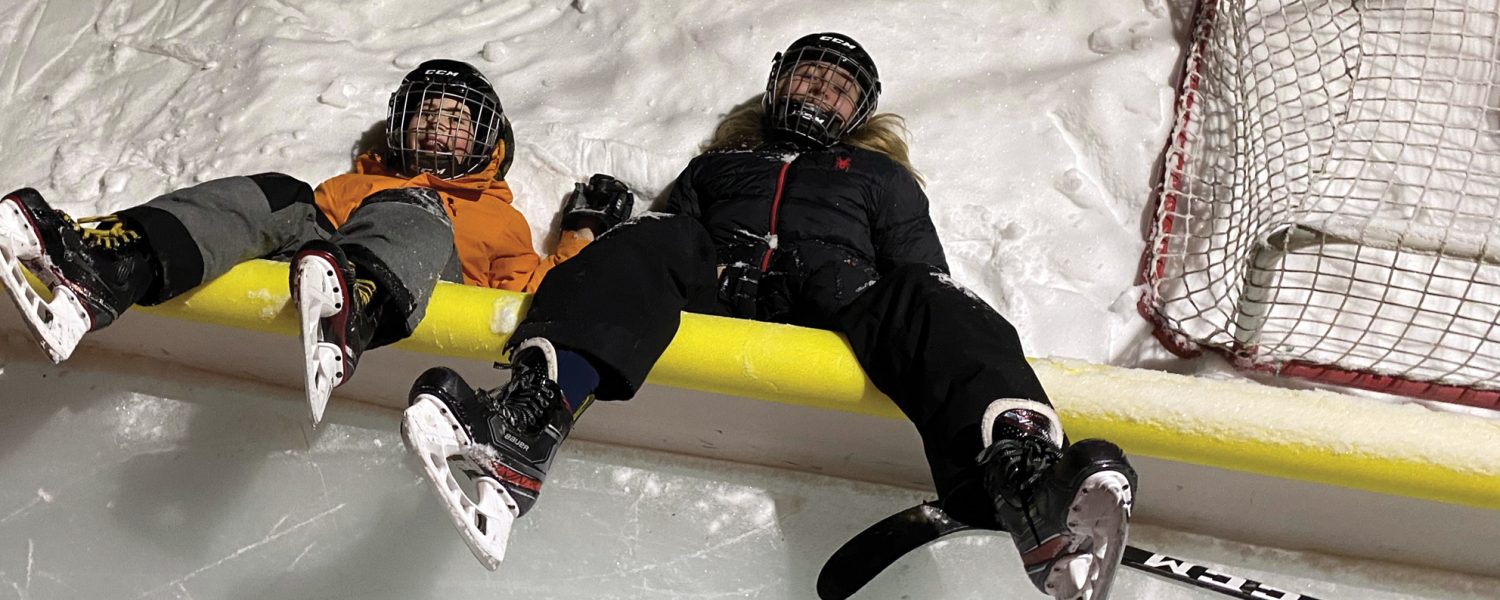
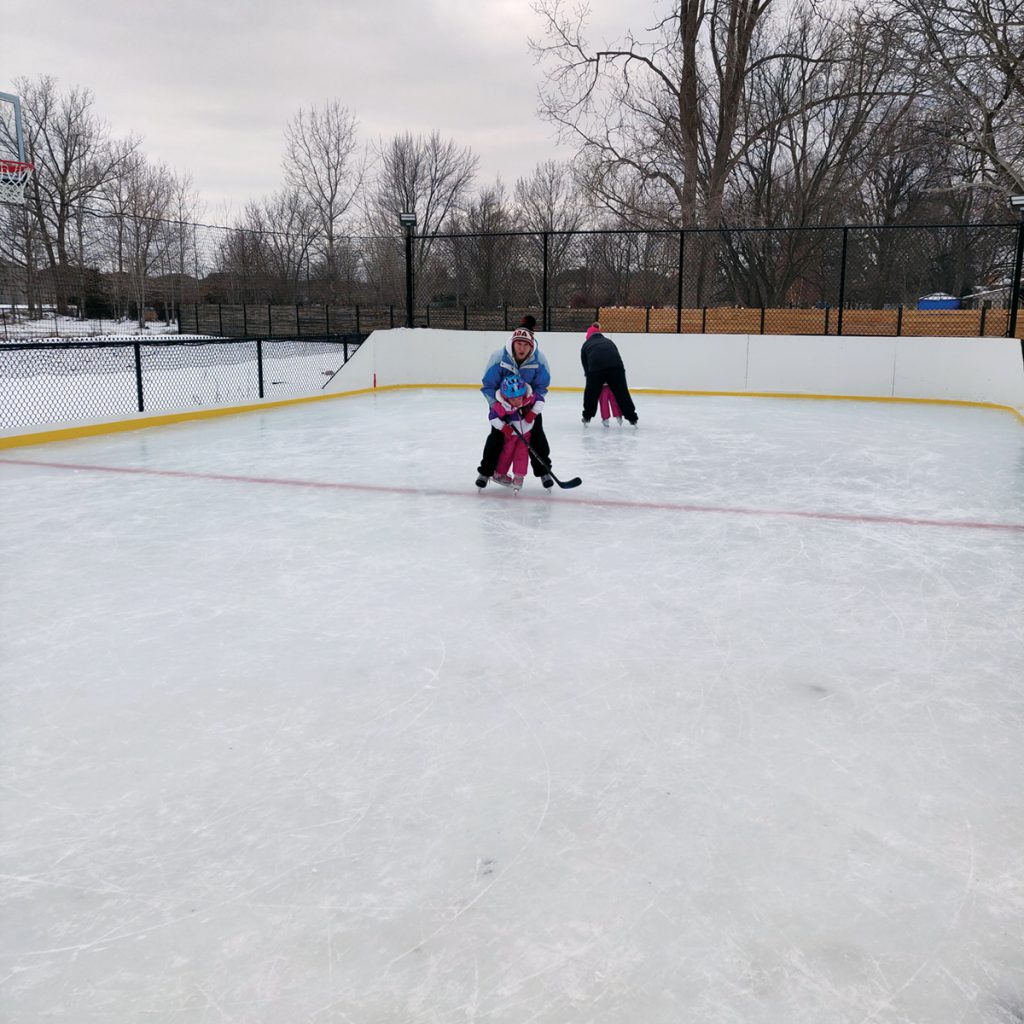
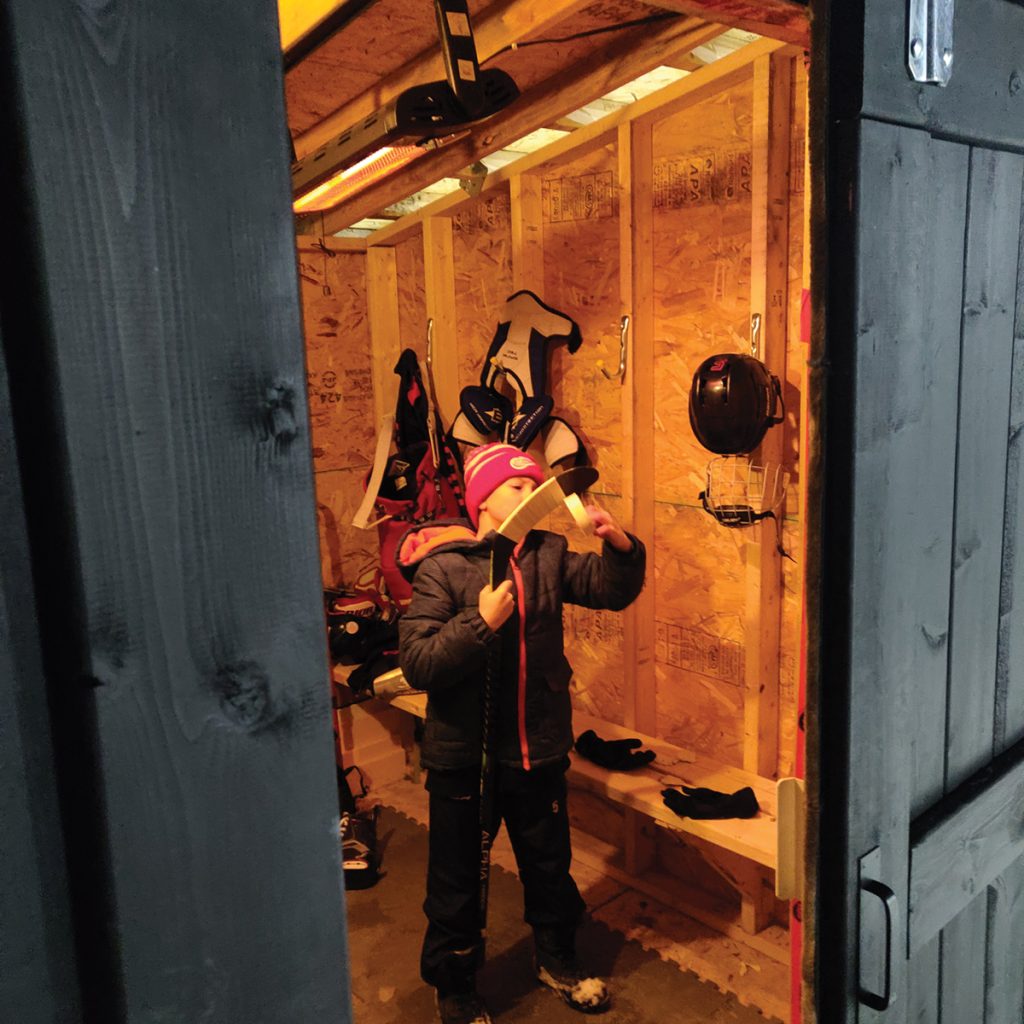
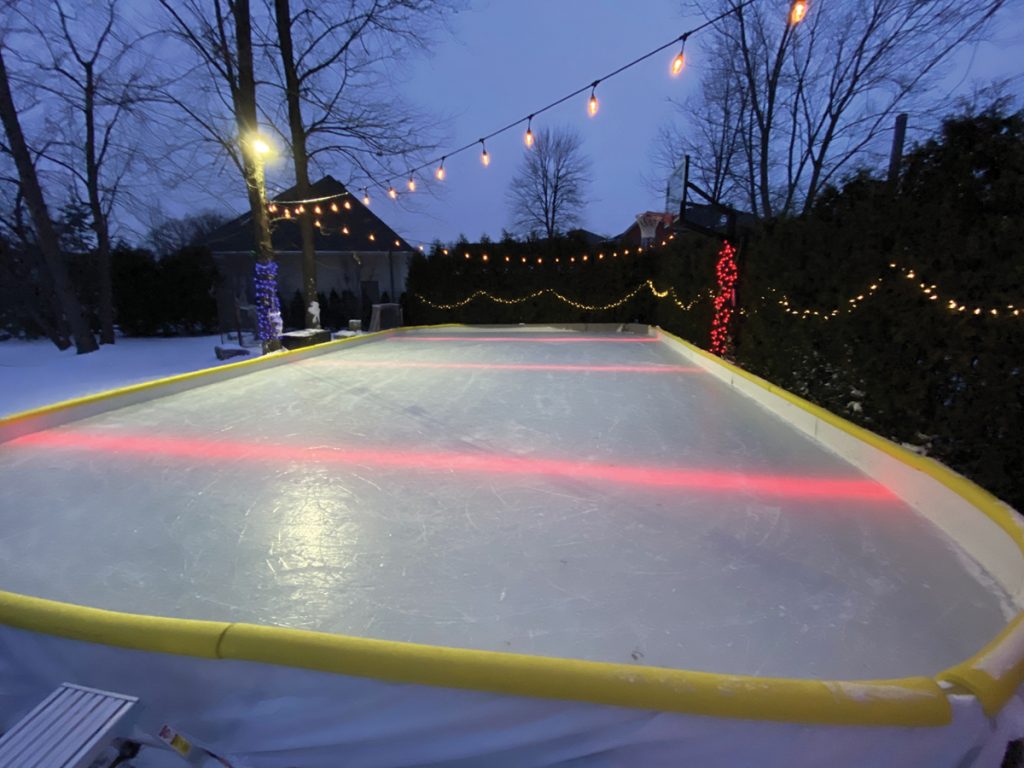
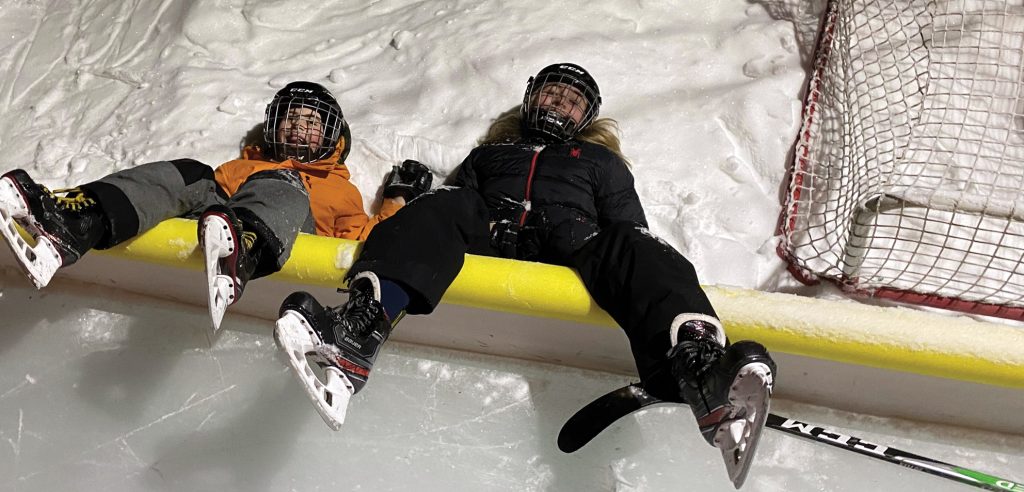

Add comment